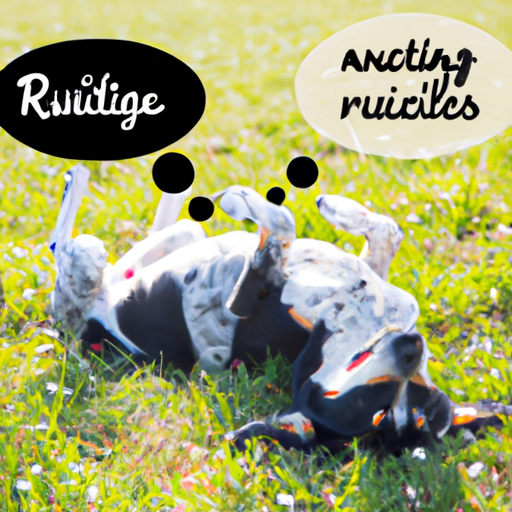Introduction
You’ve probably seen it happen a dozen times. Your beloved furry friend suddenly flops onto their back, legs flailing in the air, rolling around with apparent glee. It’s a hilarious and endearing sight, but have you ever stopped to wonder, why do dogs roll around on their back?
The Joy of Rolling
Firstly, rolling is just plain fun for dogs. Your pet is not so different from you in that they also seek pleasure and enjoyment. Consider how you feel when you sink into a hot bath after a long day or slide into fresh bed sheets. Your dog rolling on their back is their version of these little joys of life.
Communication and Scent Marking
Secondly, when your dog rolls around on their back, they’re communicating and leaving their scent. Dogs have scent glands in their skin that release pheromones, which are chemicals that convey information to other dogs.
Here is a table that provides an overview of the key reasons:
| Reasons for Rolling | Explanation |
|---|---|
| Fun and Enjoyment | Rolling is a play behavior and is fun for dogs. |
| Scent Marking | Dogs have scent glands in their skin that release pheromones. |
| Comfort and Relief | Rolling can help dogs relieve discomfort or itchiness. |
| Submissive Behavior | A dog may roll onto their back to show submission to a more dominant dog. |
| Trying to get your attention | Dogs may roll on their backs as a way of getting your attention. |
Comfort and Relief
Thirdly, rolling can provide comfort and relief. If your dog is feeling an itch that they just can’t scratch, rolling around on their back can provide some much-needed relief.
Submission
Fourthly, rolling on their back can be a sign of submission. In the dog world, exposing the belly is a surefire way of showing that they’re not a threat.
A Cry for Attention
Finally, your dog might be trying to get your attention. Yes, just like a toddler throwing a tantrum in a supermarket, your dog might roll on their back because they know it will get them what they want – your attention.
FAQs
1. What should I do if my dog is rolling on their back excessively?
If this behavior becomes excessive or if your dog appears to be in discomfort, it’s a good idea to consult a vet.
2. Can rolling on the back be a sign of a medical problem?
Sometimes, yes. If the rolling is accompanied by other signs of discomfort, it could indicate a skin problem or other medical issue.
3. What should I do if my dog rolls on their back during a walk?
If it’s safe and there’s no apparent danger or discomfort, let them enjoy their roll. However, if they’re rolling in something potentially harmful, it’s best to discourage the behavior.
4. How can I discourage my dog from rolling on their back?
You can try redirecting their attention with a toy or treat. Consistent training can also help in managing this behavior.
5. Are certain breeds more prone to rolling on their back?
While all dogs can exhibit this behavior, breeds with more playful personalities may do it more frequently.
Whether your dog is rolling around for joy, relief, communication, submission, or to catch your eye, it’s all part of their canine charm. Understanding their behavior will help you take better care of them and appreciate their unique ways of expressing themselves. So next time your dog starts rolling around, you’ll know there’s more to it than meets the eye.



